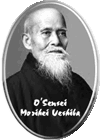|
Atemi - Strike to an opening. During training, atemi is used to distract uke's attention only. Avoid contact.
Dogi or gi - Training uniform
Dojo - Training hall, club
Dojocho - Leader of a dojo or club
Domo arigato gosaimasu - Thank you very much
Hajime - Begin
Hanmi handachi - Position where nage is sitting and uke is standing
Hidari hanmi - Left stance
Kamae - Stance (command to get you into stance)
Kancho - Leader or founder of an organization
Kotai - Defender - attacker change roles
Migi hanmi - Right stance
Nage - One who throws, the defender
Onajiku - Same technique other side
Onegaishimasu - I welcome you to train with me
Rei - Bow
Seiretsu - Be seated or line up
Sempai - Senior student
Sensei - Teacher, one who leads the way
Shomen ni rei - Bow to the front
Shuseikan - The name given by Soke David Dye to Sensei Nilo's dojo meaning: a place for mastery of one's self thru sincere,
austere training.
Shuyokan - The name given by Soke Gozo Shioda to the dojo of Sensei David Dye, the first Yoshinkan Aikido Dojo to be registered
in the United States. When translated from its etymology, shuyokan means: a place of mastering training.
Suwariwaza - Techniques done while both partners are seated
Uke - One who is thrown, the attacker
Yoi - Ready
--------------------------------------------------------------------------------
Strikes and weapons attack
Shomen uchi - Strike to the top of the head
Yokomen uchi - Strike to the side of the head or neck
Mune tsuki - Punch or thrust to the middle section of the body
Jo tori shomen uchi - Strike to the top of the head with a stick
Jo tori yokomen uchi - Strike to the side of the head or neck with a stick
Tanto tori mune tsuki - Knife thrust to the middle section of the body
Tanto tori shomen tsuki - Knife thrust to the top of the head
Tanto tori yokomen tsuki - Knife thrust to the side of the head or neck
Tanto tori gyaku mawashi tsuki - Reverse roundhouse knife thrust
--------------------------------------------------------------------------------
Grabbing Attacks
Katate tori - One-hand grab
Katate kosa tori - Cross-hand grab
Katate tori ryote mochi - Grab with both hands. Also known as Morote dori to mean two hands grabbing one hand. Ryote dori
means two hands grabbing on two hands.
Hiji tori - Elbow grab
Kata tori - Chest or front lapel grab
Ryokata tori - Grab on both front lapels
Ryote tori - Two-hand grab on two hands.
Ushiro tori - Bear hug from behind
Ushiro kubi shime - Strangulation/choke from behind
Ushiro tekubi tori - Grab on two hands from behind
Ushiro tekubi tori kubi shime - Grab with one hand, choke with the other from behind
Ushiro hiji tori - Grab on two elbows from behind
Ushiro kata tori - Grab on two shoulders from behind
--------------------------------------------------------------------------------
Kicking Attacks
Mae geri - Front thrust kick
Mawashi geri - Roundhouse kick
Ushiro geri - Back kick
--------------------------------------------------------------------------------
Techniques
Ikkyo - First technique, first principle
Nikyo - Second technique, wrist torque to control opponent
Sankyo - Third technique, wrist-elbow torque to control opponent
Yonkyo - Fourth technique
Gokyo - Fifth technique
Kokyu nage - Breath throw, "20-year technique";
Kokyu nage irimi - Front entering breath throw, also called iriminage.
Shiho nage - All-direction throw
Kote gaeshi - Wrist-out-turn throw
Sokumen irimi nage - Side step-in throw
Ude garami - Arm lock
Katagatame - Variation of kaiten nage where the opponent's shoulder is locked and brought directly to the ground.
Ashi shime - Striking leg held or locked securely
Ashi-uchi men-uchi - Strike uke's kicking leg then strike face
Kubi shime - Choke
Hiki otoshi - Pull down
--------------------------------------------------------------------------------
Counting
Ichi - One
Ni - Two
San - Three
Shi - Four
Go - Five
Roku - Six
Shichi - Seven
Hachi - Eight
Kyu - Nine
Ju - Ten
|

